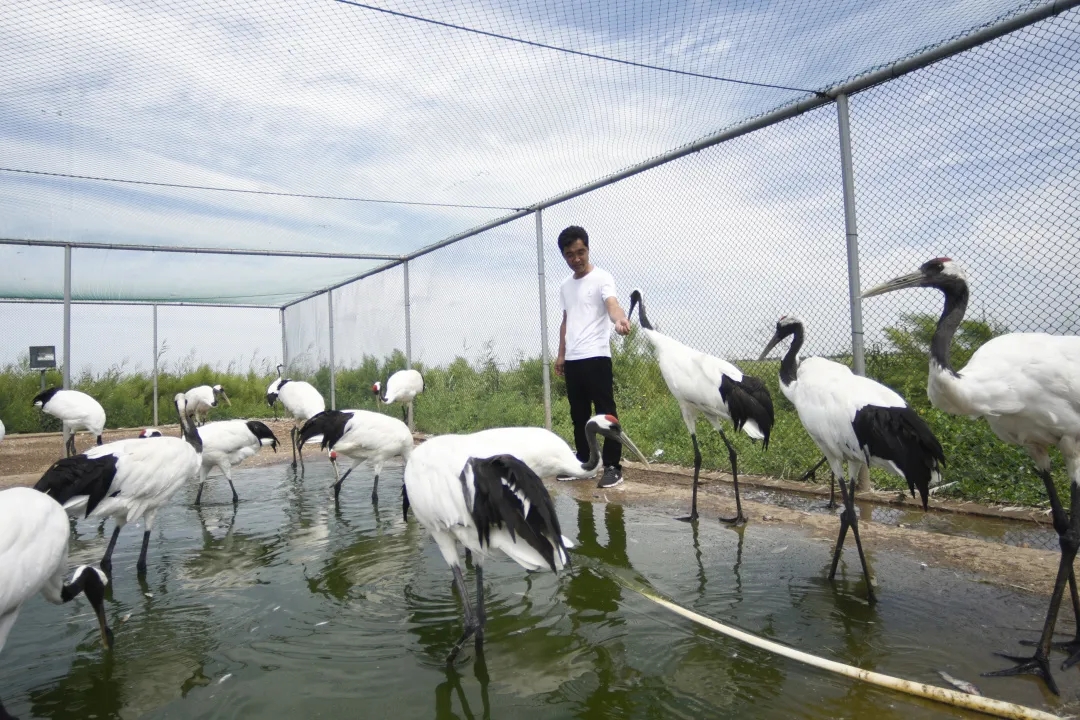Panjin is an international wetland city that boasts the largest reed marsh in the world, making it an important resting place for migrating red-crowned cranes — known as the“Crane’s Hometown”. Within the vast reed marshes, there is a person who has been silently dedicated to protecting red-crowned cranes for thirty years: Zhao Shiwei. He has devoted himself to the artificial raising, breeding, taming, and rescuing of red-crowned cranes at the Liaoning Crane Breeding and Protection Station.

In 1993, after graduating from Shenyang Agricultural University, Zhao Shiwei reported to the Zhaoquanhe Management Station of Shuangtai River Estuary National Nature Reserve in the depths of the vast reed marshes in Panjin. He said: “Faced with emptiness and silence, I was once discouraged and wanted to change my career. However, when I first saw red-crowned cranes, all my doubts disappeared: Because I really like the red- crowned crane that is like an angelic fairy, love the pure land of this reserve, and enjoy the happy time with wild animals! ‘Breeding Crane’ has become the career of my lifetime.”
In early January 2012, he detected that three red-crowned cranes had not flown to the south. After a constant observation for more than thirty days, he found that they were still there on February 10th, 2012. It convinced him that the three red-crowned cranes had changed from migratory birds to Panjin’s sedentary birds.
Afterwards, he began to experiment with feeding sedentary cranes in their natural habitat during autumn and winter. In 2015, nineteen red-crowned cranes, six eurasian cranes, one white-naped crane, and one hooded crane overwintered in the reserve. The success of this experiment made it possible to observe cranes year-round, proving that Panjin truly deserves its nickname as the Crane’s Hometown.
In 1996, Zhao Shiwei succeeded in breeding three red-crowned crane chicks. The first one, born on May 1st, was named “Labor”. The second, born on May 4th, was named “Youth” in reference to the May 4th Movement, a significant event in Chinese history. The average weight of a red-crowned crane egg is around 280 grams, but the third egg weighed only 226 grams, earning it the name “Little”.
Unlike wild cranes, the red-crowned cranes hatched at the Liaoning Crane Breeding and Protection Station saw Zhao Shiwei first when they emerged from their eggs. As a result, many people have come to call him the “Crane’s Father”, in recognition of his dedicated work.

